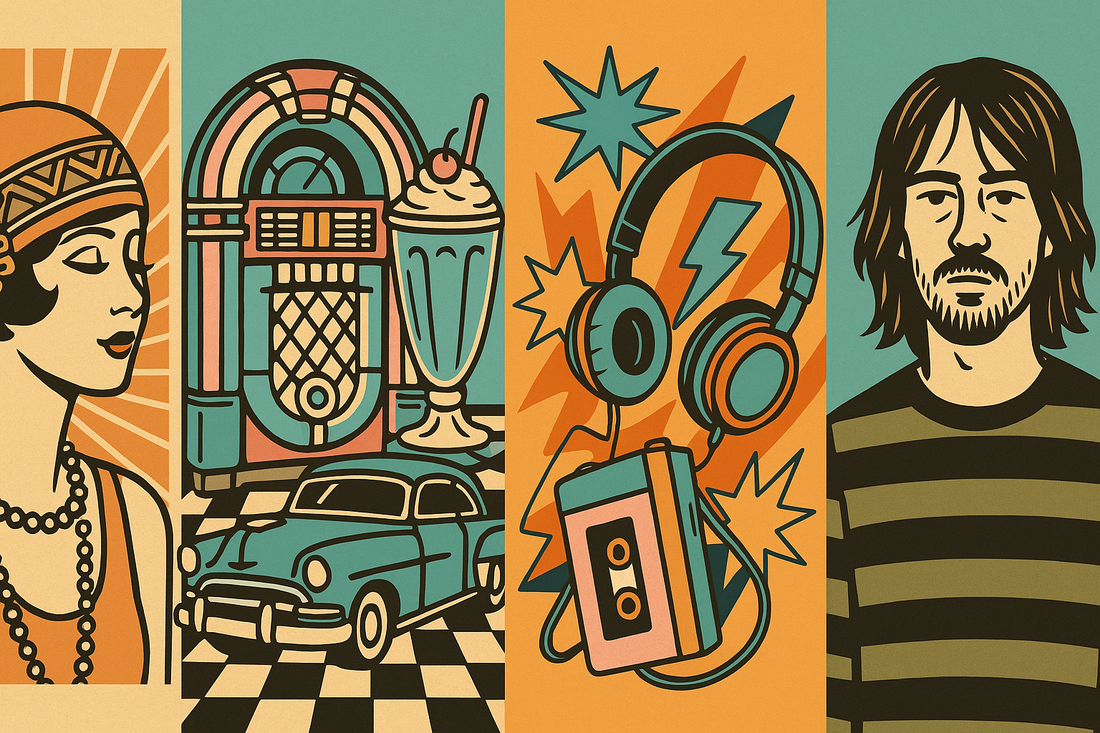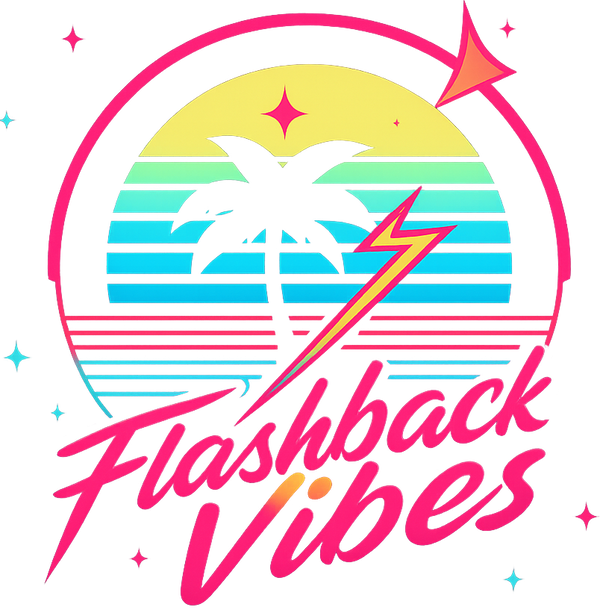
The Evolution of Cool: From the Roaring 20s to the Grungy 90s
What does it mean to be cool?
It’s more than just what you wear—it’s an attitude, a vibe, a cultural movement. But here’s the thing: cool isn’t static. It evolves. Every decade had its own definition, its own aesthetic, and its own icons of style.
From the speakeasy swagger of the 1920s to the flannel-wrapped rebellion of the 1990s, cool has been reinvented time and time again. And now? We're bringing it back—one graphic tee at a time.
Let’s take a journey through the decades and explore how “cool” transformed—and why it still inspires what we wear today.
The 1920s: Roaring Into Style
Cool = Glamour, Jazz, and Rebellion
The 20s weren’t just roaring—they were revolutionary. Post-war energy mixed with prohibition-era thrill to create a new kind of edge. Flappers danced in fringe. Gangsters strutted in pinstripes. And jazz was more than music—it was attitude.
Key Looks:
- Cloche hats & bobbed hair
- Drop-waist dresses and pearls
- Pinstripe suits, slicked hair, and pocket watches
Why it still inspires: The 20s were about breaking norms. Today, that same rebellious glam can be seen in oversized tees with art deco designs, vintage typography, and Gatsby-inspired graphics that nod to excess without losing edge.
The 1930s: Resilience Meets Refinement
Cool = Grace Under Pressure
The Great Depression brought hard times, but fashion didn’t disappear—it just evolved. Style leaned into elegance. Hollywood glamour became aspirational. People dressed well not because they had a lot—but because it meant something.
Key Looks:
- Sleek silhouettes and structured dresses
- Double-breasted suits and fedoras
- The rise of movie star style (think Katharine Hepburn and Clark Gable)
Modern twist: 30s-inspired designs today lean into refined graphics—think monochrome prints, elegant fonts, and subtle nods to old Hollywood.
The 1940s: Utility Chic
Cool = Confidence and Purpose
With World War II shaping the world, the 40s introduced utilitarian style with a twist. Women joined the workforce, men went to war, and fashion became functional. But make no mistake—there was style in the strength.
Key Looks:
- High-waisted trousers and button-downs
- Victory rolls and red lipstick
- Military jackets, combat boots, and aviation gear
Inspiration today: We see it in structured outerwear, bold red graphics, and tees featuring wartime posters, Rosie the Riveter, and vintage typography that says “tough is beautiful.”
The 1950s: Rock 'n' Roll Rebels
Cool = Rebellion with a Comb
Enter the greasers. The jukebox heroes. The teenage dreamers with leather jackets and too much pomade. The 50s birthed the idea of youth culture—and with it came the rise of cool as a personal brand.
Key Looks:
- Leather jackets, cuffed jeans, white tees
- Poodle skirts and saddle shoes
- Slick hairstyles, Wayfarers, and jukebox vibes
Tees that rock: Elvis silhouettes, diner signs, vintage hot rods, and that iconic 50s font style all make for graphic designs that never go out of style.
The 1960s: Counterculture and Color
Cool = Freedom, Psychedelia, and Peace
The 60s flipped the script. Civil rights, the space race, and rock 'n' roll collided to create a decade of bold change—and bold fashion. Tie-dye, bell bottoms, peace signs, and flower power took over.
Key Looks:
- Fringe vests, colorful prints, wide-leg pants
- Mod dresses and knee-high boots
- Round sunglasses, headbands, and protest tees
Still trending: Peace symbols, retro florals, psychedelic fonts, and music festival-inspired designs are everywhere in today’s retro tee game.
The 1970s: Disco Fever & Rock Gods
Cool = Flash, Groove, and Self-Expression
The 70s gave us two major waves: disco glam and rock rebellion. Whether you were spinning at Studio 54 or air-guitaring in your garage, the decade was all about owning your style—loudly.
Key Looks:
- Bell bottoms, platforms, glitter, and glam
- Denim on denim, fringe jackets, and bandanas
- Album cover art, vintage band tees, and funky patterns
Design inspo: Tees inspired by vintage rock posters, funky fonts, and disco ball art are perfect for today’s bold, expressive streetwear.
The 1980s: Neon Dreams & Mixtape Magic
Cool = Excess, Energy, and Iconic Everything
The 80s were loud. They didn’t whisper—they shouted. Bright colors, huge hair, synth-pop, arcade games, boomboxes—it was a sensory explosion. MTV didn’t just change music. It changed style.
Key Looks:
- Neon windbreakers, acid-wash jeans, high-top sneakers
- Oversized tees, leggings, and scrunchies
- Big logos, bigger accessories, and even bigger personalities
Tee trends: Think cassette tapes, VHS visuals, synth-wave designs, and glitch art—pure visual gold for retro lovers.
The 1990s: Grunge, Chill, and Peak Cool
Cool = Not Trying Too Hard
The 90s redefined cool with a laid-back, "whatever" kind of swagger. It was the decade of mix CDs, mall hangs, and sarcastic cartoons. Grunge gave us flannel and rebellion. Hip-hop brought bold graphics and attitude.
Key Looks:
- Baggy jeans, band tees, flannels tied around the waist
- Crop tops, cargo pants, windbreakers
- Snapbacks, chokers, tiny sunglasses
Still killing it: 90s nostalgia is dominating fashion right now. From Rugrats tees to lo-fi VHS designs and flannel-paired outfits, the 90s remain king of cool.
What We Learned: “Cool” Is a Moving Target—But It Always Circles Back
Every decade left a fingerprint. Some screamed, some whispered. Some stood for peace, others for protest. Some shimmered in disco lights, others slouched in flannel. But one thing is true for all of them:
Cool has always been about self-expression.
And today, the retro revival lets us pick our favorite eras and remix them however we want. A 70s font on an 80s neon tee? Go for it. A 50s diner print with a 90s dad hat? Yes, please. There are no rules—only style.
